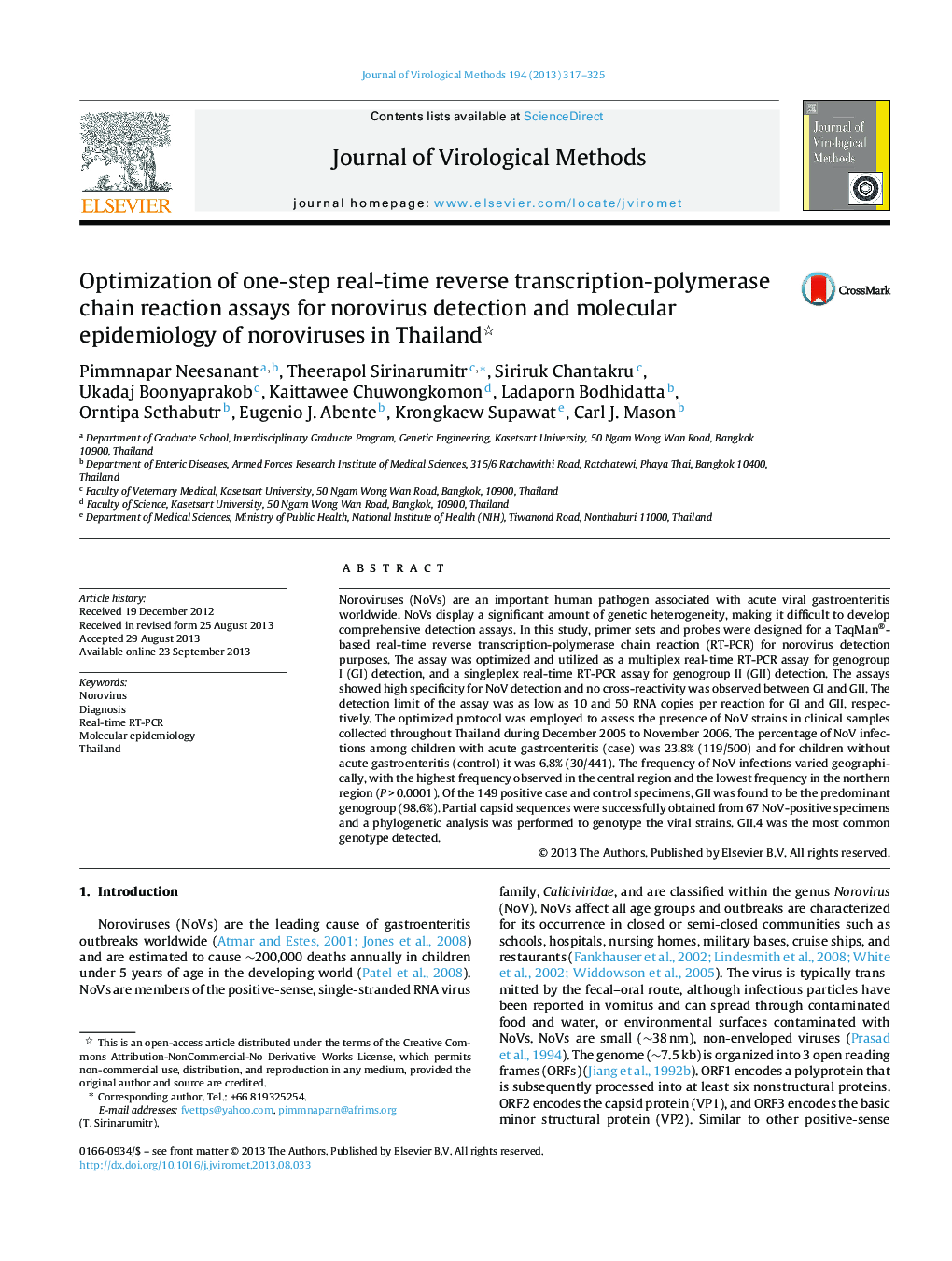| کد مقاله | کد نشریه | سال انتشار | مقاله انگلیسی | نسخه تمام متن |
|---|---|---|---|---|
| 6134264 | 1593482 | 2013 | 9 صفحه PDF | دانلود رایگان |
عنوان انگلیسی مقاله ISI
Optimization of one-step real-time reverse transcription-polymerase chain reaction assays for norovirus detection and molecular epidemiology of noroviruses in Thailand
ترجمه فارسی عنوان
بهینه سازی تست های واکنش زنجیره ای رونویسی معکوس و یکپارچه برای تشخیص نوروویر و اپیدمیولوژی مولکولی نوردوویروس ها در تایلند
دانلود مقاله + سفارش ترجمه
دانلود مقاله ISI انگلیسی
رایگان برای ایرانیان
کلمات کلیدی
موضوعات مرتبط
علوم زیستی و بیوفناوری
ایمنی شناسی و میکروب شناسی
ویروس شناسی
چکیده انگلیسی
Noroviruses (NoVs) are an important human pathogen associated with acute viral gastroenteritis worldwide. NoVs display a significant amount of genetic heterogeneity, making it difficult to develop comprehensive detection assays. In this study, primer sets and probes were designed for a TaqMan®-based real-time reverse transcription-polymerase chain reaction (RT-PCR) for norovirus detection purposes. The assay was optimized and utilized as a multiplex real-time RT-PCR assay for genogroup I (GI) detection, and a singleplex real-time RT-PCR assay for genogroup II (GII) detection. The assays showed high specificity for NoV detection and no cross-reactivity was observed between GI and GII. The detection limit of the assay was as low as 10 and 50 RNA copies per reaction for GI and GII, respectively. The optimized protocol was employed to assess the presence of NoV strains in clinical samples collected throughout Thailand during December 2005 to November 2006. The percentage of NoV infections among children with acute gastroenteritis (case) was 23.8% (119/500) and for children without acute gastroenteritis (control) it was 6.8% (30/441). The frequency of NoV infections varied geographically, with the highest frequency observed in the central region and the lowest frequency in the northern region (PÂ >Â 0.0001). Of the 149 positive case and control specimens, GII was found to be the predominant genogroup (98.6%). Partial capsid sequences were successfully obtained from 67 NoV-positive specimens and a phylogenetic analysis was performed to genotype the viral strains. GII.4 was the most common genotype detected.
ناشر
Database: Elsevier - ScienceDirect (ساینس دایرکت)
Journal: Journal of Virological Methods - Volume 194, Issues 1â2, December 2013, Pages 317-325
Journal: Journal of Virological Methods - Volume 194, Issues 1â2, December 2013, Pages 317-325
نویسندگان
Pimmnapar Neesanant, Theerapol Sirinarumitr, Siriruk Chantakru, Ukadaj Boonyaprakob, Kaittawee Chuwongkomon, Ladaporn Bodhidatta, Orntipa Sethabutr, Eugenio J. Abente, Krongkaew Supawat, Carl J. Mason,
